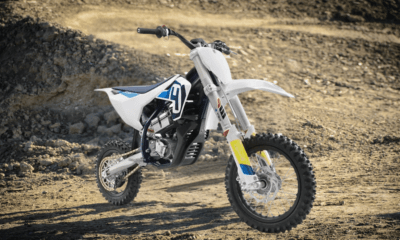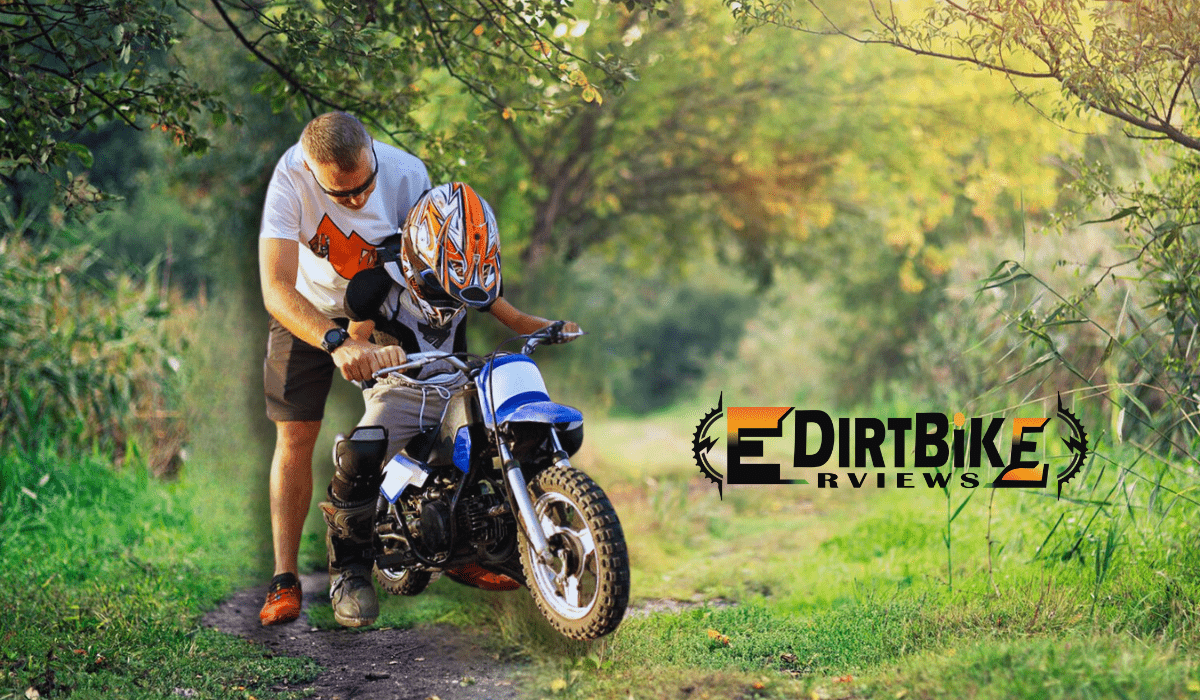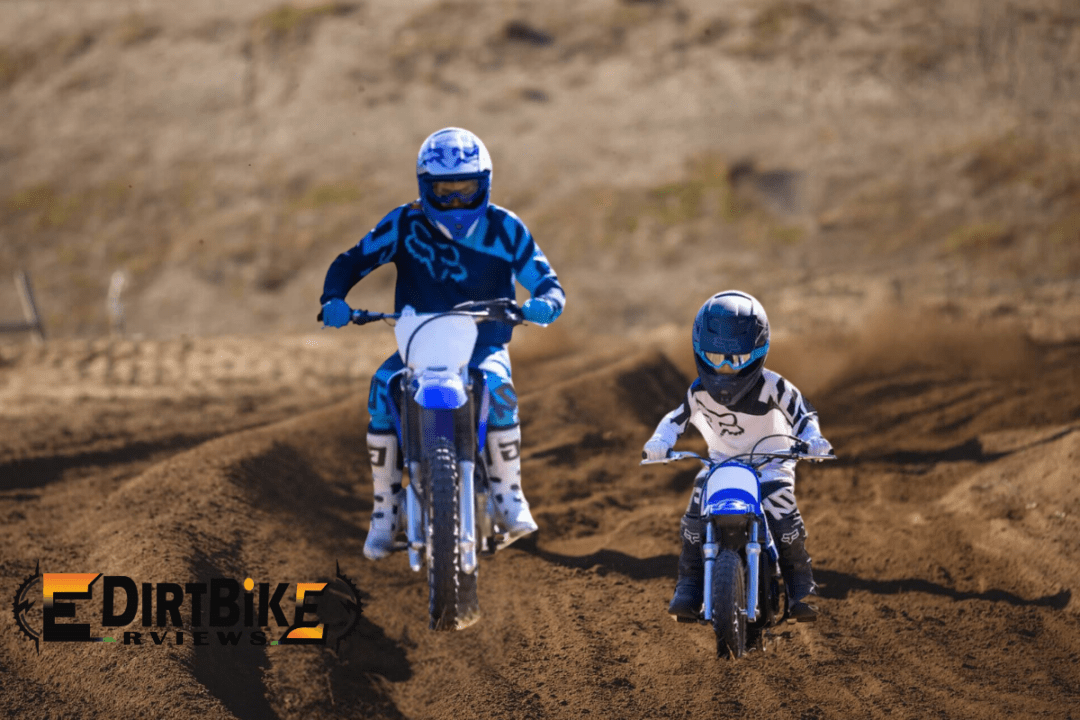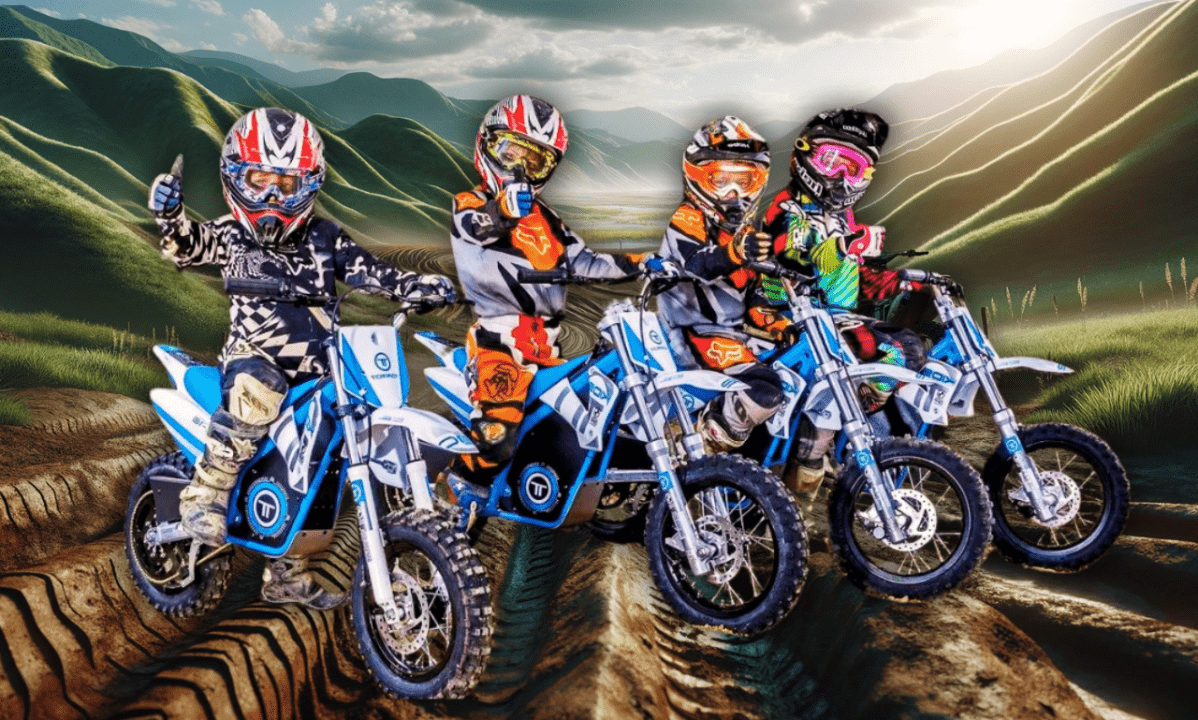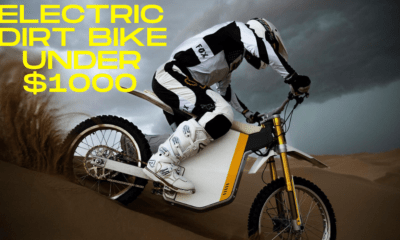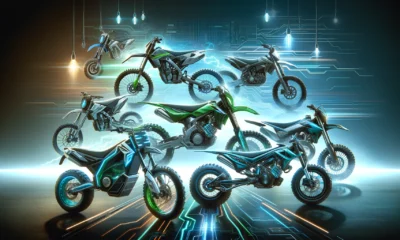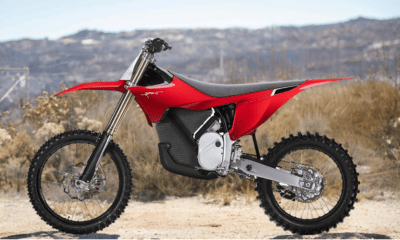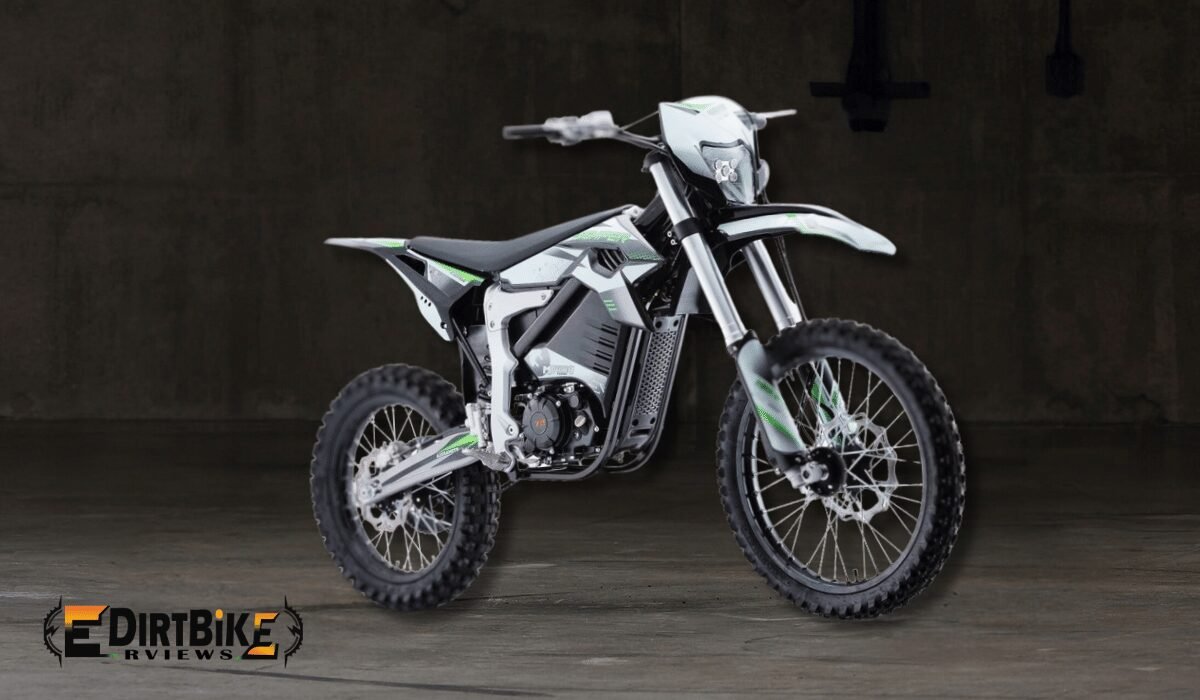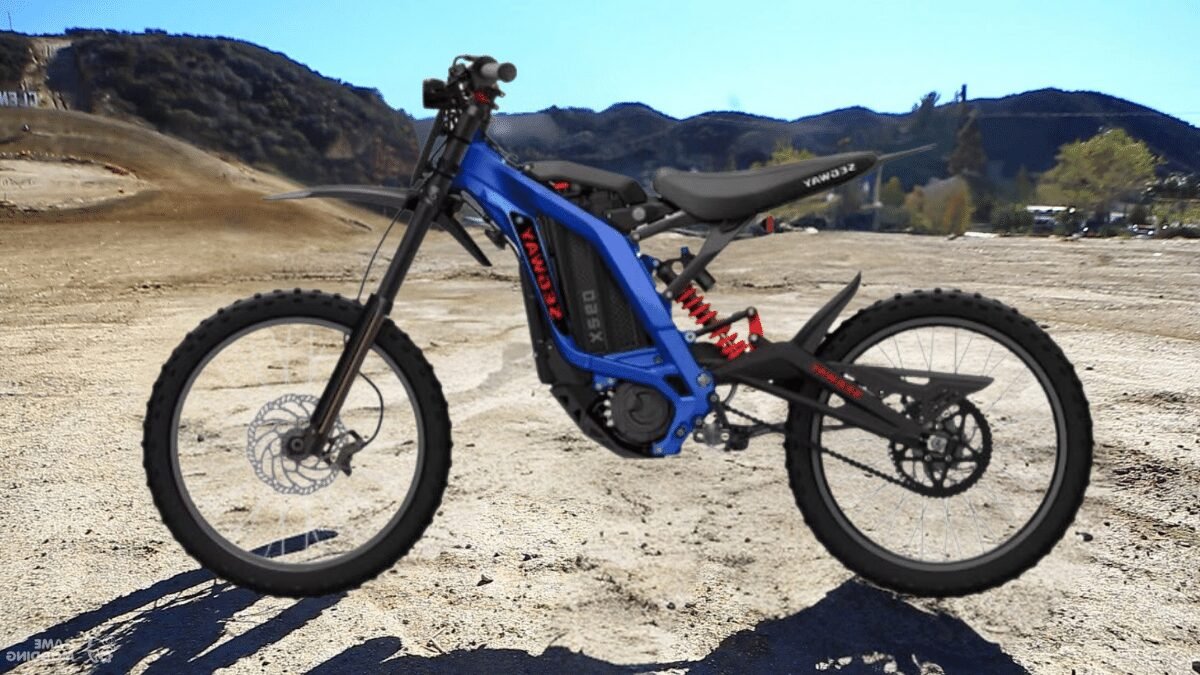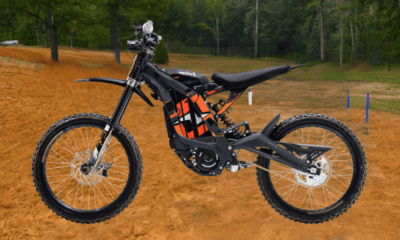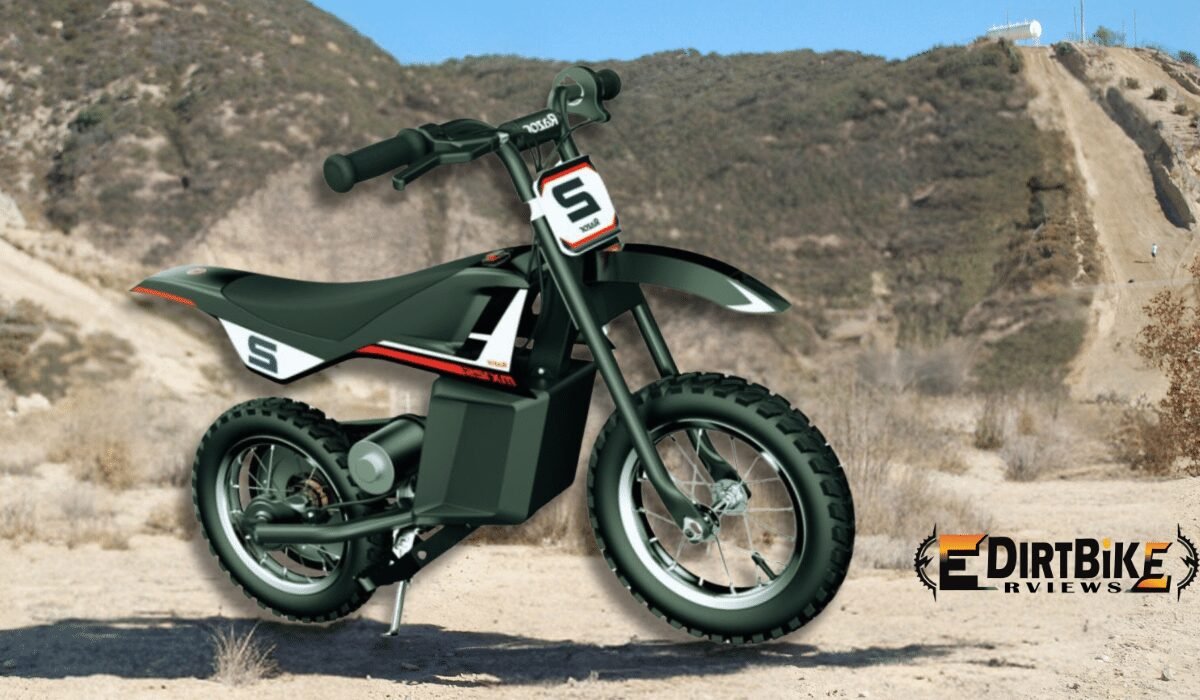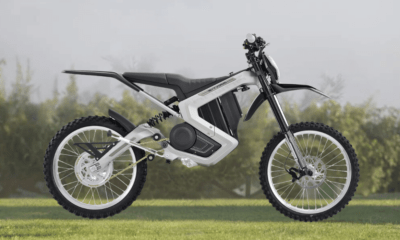E-Bike Tips & Guides
Keep It Running: Maintenance Tips for Your Child’s Electric Dirt Bike
Discover key maintenance tips for selecting and safely enjoying a child’s electric dirt bike. Ideal for parents seeking practical advice and insights.
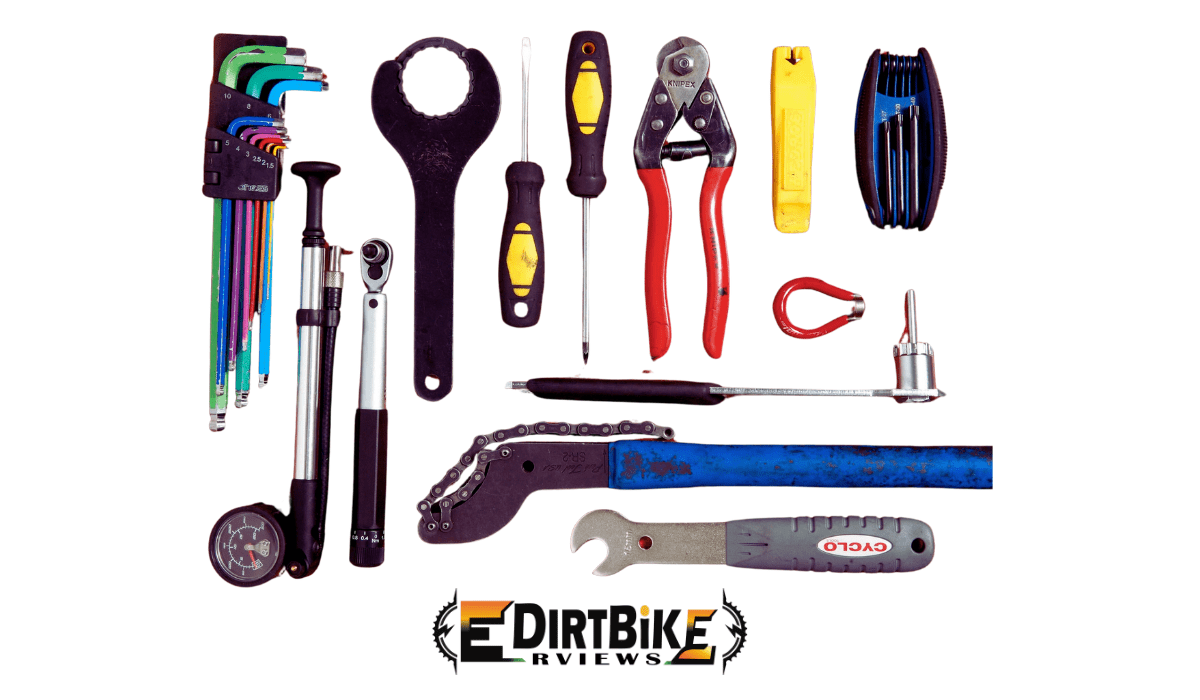
Electric dirt bikes represent a thrilling and environmentally friendly way for children to explore the joys of riding. However, like any vehicle, these bikes require regular maintenance to remain safe, reliable, and fun. This article delves into the world of child’s electric dirt bikes, focusing specifically on crucial maintenance tips for their longevity and performance.
Maintaining a child’s electric dirt bike is not just about keeping the bike in good working condition; it’s also an excellent opportunity for parents to teach their children about responsibility and the basics of mechanical care. From the battery to the brakes, each component plays a vital role in the overall functionality of the bike. Understanding and taking care of these parts extends the bike’s life and ensures that your child can enjoy a safe and smooth ride every time.
The following sections will explore everything from the essential maintenance checklist to more specific areas like battery care, tire maintenance, and handling electrical components. Whether you’re a seasoned mechanic or new to electric dirt bikes, these tips will give you the knowledge and confidence to keep your child’s bike in top condition. So, let’s gear up and dive into the essential maintenance tips for your child’s electric dirt bike.
Table of Contents
Understanding Your Child’s Electric Dirt Bike
Essential Components and How They Work
Understanding the basic components of your child’s electric dirt bike is the first step toward effective maintenance. These bikes are marvels of modern technology, combining mechanical and electrical elements to provide a seamless riding experience. They consist of a frame, motor, battery, tires, brakes, and a chain drive system. Each part has a specific role:
- Frame: The skeleton that holds everything together. It’s designed to be lightweight yet durable.
- Motor: The heart of the electric dirt bike, providing the power needed to drive the bike forward.
- Battery: This fuel tank stores electrical energy that powers the motor. Batteries in electric dirt bikes are usually lithium-ion, known for their efficiency and long life.
- Tires: Tires are crucial for traction and safety, like any vehicle. They vary in tread and size, depending on the bike’s design and intended use.
- Brakes: Essential for safety, they allow your child to stop the bike effectively.
- Chain Drive System: Transfers power from the motor to the rear wheel, propelling the bike forward.
Importance of Regular Maintenance
Regular maintenance of these components is vital for several reasons. Firstly, it ensures the safety of the rider. A well-maintained bike is less likely to malfunction, which could lead to accidents. Secondly, it extends the life of the bike. Regular check-ups and repairs can prevent minor issues from becoming major problems. Finally, maintenance keeps the motorcycle performing at its best, ensuring your child enjoys every ride without hiccups.
Basic Maintenance Checklist
A comprehensive maintenance routine is vital to the longevity and safety of your child’s electric dirt bike. By regularly performing these checks and maintenance tasks, you can ensure the bike remains in excellent condition and identify potential issues before they escalate.
Regular Inspection Points
- Visual Inspection: Visually inspect the bike before and after each use. Look for any signs of wear, damage, or loose components. Pay special attention to the frame, wheels, and handlebars.
- Tire Check: Inspect the tires for proper inflation, tread wear, and punctures or damages. Correct tire pressure is crucial for safe handling and extends tire life.
- Brake Functionality: Test the brakes for responsiveness. Check the brake pads for wear and ensure the brake levers are secure and functioning smoothly.
- Chain and Sprockets: Examine the chain for proper tension and lubrication. The sprockets should be free of excessive wear and securely attached.
- Battery Health: Regularly check the battery’s charge level, connections, and housing. Ensure it is properly seated and there are no signs of damage or corrosion.
- Motor and Electrical Connections: Inspect the motor for unusual noises or smells. Check all electrical connections to ensure they are secure and free of corrosion.
Cleaning and Storage Tips
- Cleaning the Bike: Regular cleaning keeps the bike looking great and prevents the build-up of dirt and grime, which can lead to wear. Use a damp cloth to wipe down the bike and a soft brush to remove dirt from hard-to-reach areas.
- Proper Storage: When not used, store the bike in a dry, cool place away from direct sunlight. This helps prevent battery and electrical components damage and preserves the bike’s materials.
- Battery Storage: If the bike won’t be used for an extended period, store the battery separately in a cool, dry place. Avoid leaving the battery on a charger for too long, as this can reduce its lifespan.
Regularly following these basic maintenance steps will help keep your child’s electric dirt bike in top working condition, ensuring safe and enjoyable rides. The following sections delve deeper into specific maintenance areas like battery, tire, and brake system care. Remember, a little effort in maintenance can lead to a lot of fun and safety on the trails.
Battery Care and Management
The battery is critical to your child’s electric dirt bike, and proper care is essential for optimal performance and longevity. Understanding how to properly charge, maintain, and store the battery will ensure it continues to provide reliable power for the bike.
Charging Practices
- Use the Correct Charger: Always use the charger that came with the bike or one recommended by the manufacturer. Using an incorrect charger can damage the battery.
- Charge Regularly: Charging the battery after each use is essential. This keeps it healthy and ensures it’s ready for the next ride.
- Avoid Overcharging: Do not leave the battery plugged in longer than necessary. Overcharging can reduce the battery’s lifespan and effectiveness.
- Monitor Charging Conditions: Charge the battery in a dry, cool place away from direct sunlight. Extreme temperatures can affect the battery’s charging process and health.
Long-term Battery Storage and Care
- Partial Charge for Storage: If the bike won’t be used for an extended period, store the battery with a partial charge, typically around 50-60%. This helps maintain battery health.
- Ideal Storage Conditions: Keep the battery in a cool, dry place. Extreme cold or heat can degrade the battery’s performance and lifespan.
- Regular Check-ups: Even when not used, check the battery every few months. A periodic charge may be necessary to keep it in good condition.
- Handling and Safety: Always handle the battery with care. Avoid dropping or exposing it to moisture, as this can cause damage.
Proper battery care is key to maintaining your child’s electric dirt bike. Following these guidelines, you can help ensure the battery remains healthy and efficient, providing reliable power for every ride. The following section will focus on tire maintenance, another crucial aspect of bike care. Remember, taking care of the battery extends its life and ensures the safety and enjoyment of your child’s riding experience.
Tire Maintenance
Tires are the point of contact between the electric dirt bike and the ground, playing a crucial role in safety and performance. Proper tire maintenance ensures that your child enjoys a smooth and safe ride. Here’s what you need to know about maintaining the tires on a child’s electric dirt bike:
Checking and Maintaining Tire Pressure
- Regular Pressure Checks: Regularly check the tire pressure with a reliable gauge. Properly inflated tires ensure better handling, reduce the risk of punctures, and extend the tire’s life.
- Ideal Tire Pressure: Refer to the bike’s manual for the recommended tire pressure. It’s essential to maintain this level to ensure optimal performance and safety.
- Effects of Incorrect Pressure: Under-inflated tires can make the bike more challenging to control, while over-inflated tires may burst or wear unevenly.
Recognizing Tire Wear and When to Replace
- Visual Inspection: Regularly inspect the tires for signs of wear, such as cracks, cuts, or bald spots. Uneven wear can indicate issues with tire pressure or alignment.
- Tread Depth: Check the tread depth. Worn-out treads compromise the bike’s grip and handling, especially on loose or slippery surfaces.
- Replacement: If the tires show significant wear or damage, it’s time to replace them. Always replace with tires the manufacturer recommends for the best fit and performance.
- Professional Advice: If you’re unsure about the condition of the tires, seek advice from a professional. They can provide insights on whether a tire needs replacement or repair.
By closely monitoring tire condition and maintaining the correct pressure, you can significantly enhance the riding experience and safety of your child’s electric dirt bike. In the next section, we will cover the critical topic of brake system care, ensuring that your child can stop safely and effectively at all times. Remember, tire maintenance is not just about prolonging the life of the tires but also about ensuring the overall safety of the bike.
Brake System Care
The brake system is a vital safety feature on your child’s electric dirt bike. Proper maintenance of the brakes ensures that your child can stop effectively and safely, making it an essential aspect of regular bike care.
Regular Brake Checks
- Brake Pads Inspection: Regularly inspect the brake pads for wear. Thin or worn-out brake pads are less effective and can compromise safety. They should be replaced if worn down to the minimum thickness specified by the manufacturer.
- Brake Lever Adjustment: Check the brake levers to ensure they are tight and responsive. There should be no excessive play in the levers, and they should feel firm when pressed.
- Brake Cable Inspection: For bikes with cable-operated brakes, inspect the cables for fraying or rust. Lubricate the cables periodically and replace them if they show significant wear.
Tips for Brake Maintenance
- Cleaning Brakes: Keep the brake discs or drums clean. Dirt and grime can reduce braking efficiency. Use a clean, damp cloth to wipe away any dirt.
- Avoiding Oil or Grease on Brakes: Ensure that no oil or grease gets on the brake pads or discs. These substances can severely diminish braking power.
- Brake Fluid Check: Check the brake fluid level and quality regularly for hydraulic brake systems. Replace the fluid according to the manufacturer’s recommendations.
- Listening for Noises: Pay attention to unusual noises when braking is applied. Squealing or grinding noises can indicate that the brakes need attention.
By regularly maintaining the brake system, you ensure the bike’s components’ longevity and, more importantly, the rider’s safety. A well-maintained brake system gives peace of mind, knowing your child can stop the bike effectively in all riding conditions. In the next section, we will explore the maintenance of the chain and motor, which are critical to the bike’s propulsion and overall performance. Remember, regular brake maintenance is an investment in safety and should never be overlooked.
Chain and Motor Maintenance
The chain and motor are essential components of your child’s electric dirt bike, playing a crucial role in the bike’s propulsion. Proper maintenance of these parts is critical to ensuring smooth operation and prolonging the bike’s life.
Lubricating and Adjusting the Chain
- Regular Lubrication: The chain should be regularly lubricated to ensure smooth movement and to prevent rust. Use a lubricant specifically designed for bike chains.
- Proper Tension: The chain tension should be checked regularly. A too-tight chain can wear out the motor, while a too-loose chain can slip or come off.
- Cleaning the Chain: Clean the chain with a suitable cleaner to remove dirt and grime before lubricating. This helps the lubricant adhere better and extends the chain’s life.
- Inspection for Wear: Regularly inspect the chain for signs of wear, stretching, or damage. Replace the chain if it shows signs of significant wear.
Motor Care Tips
- Checking Connections: Ensure that all connections to the motor are secure and free from corrosion. Loose or corroded connections can lead to power loss or motor failure.
- Listening for Unusual Noises: Pay attention to any strange noises from the motor, as these can be signs of internal issues.
- Keeping the Motor Clean: While the motor is generally low-maintenance, keeping it clean from dirt and debris helps maintain its efficiency.
- Professional Inspection: If you suspect any issues with the motor, it’s best to have it checked by a professional. Tampering with the motor without proper knowledge can cause further damage.
Maintaining the chain and motor ensures a smooth ride and reduces the risk of breakdowns and costly repairs. Incorporating these maintenance steps into your regular care routine for your child’s electric dirt bike is important. In the next section, we will discuss handling electrical components and when to seek professional help. Remember, careful maintenance of the chain and motor is vital for the overall performance and longevity of the bike.
Handling Electrical Components
Electric dirt bikes have various electrical components that require careful handling and maintenance. Understanding how to manage these components safely is crucial to ensure the longevity and safety of the bike.
Safety Precautions
- Disconnecting Power Before Maintenance: Always disconnect the battery or power source before performing any maintenance on electrical components to prevent accidents.
- Avoiding Water Exposure: Keep all electrical components dry. Exposure to water can cause short circuits and damage the electrical system.
- Handling with Care: Electrical components are sensitive and can be damaged by rough handling. Be gentle when inspecting or cleaning these parts.
- Using Proper Tools: Use the correct tools for any maintenance work on electrical components. This ensures the job is done correctly and safely.
When to Seek Professional Help
- Complex Repairs: If there are issues with the motor, controller, or other complex electrical systems, it’s best to seek help from a professional. Attempting to fix these without proper knowledge can lead to further damage.
- Electrical Faults: If you notice any electrical faults, such as burning smells, unusual noises, or intermittent power issues, consult a professional.
- Regular Check-Ups: It’s a good idea to have the bike’s electrical system checked by a professional periodically, mainly if the bike is heavily used or starts showing signs of wear.
- Battery Issues: A professional can provide accurate advice and service if you’re unsure about the battery’s health or if it requires replacement.
Handling the electrical components of your child’s electric dirt bike carefully and understanding when to seek professional help are critical aspects of maintaining the bike’s safety and functionality. In the next section, we will focus on creating a maintenance schedule, which is essential for keeping all bike parts in top condition. Remember, while some maintenance tasks can be done at home, don’t hesitate to consult with a professional for more complex issues.
Creating a Maintenance Schedule
A well-planned maintenance schedule is crucial for ensuring the longevity and safety of your child’s electric dirt bike. Regular maintenance keeps the bike in top condition and helps identify potential issues before they turn into costly repairs. Here’s how to create and implement an effective maintenance routine:
Setting a Regular Maintenance Routine
- Daily Checks: Before each use, perform a quick visual inspection of the bike. Check for loose components and ensure the tires are properly inflated, and the brakes function correctly.
- Weekly Inspections: Conduct a more thorough check once a week. This includes inspecting the chain tension and lubrication, checking the battery charge and connections, and ensuring all nuts and bolts are tightened.
- Monthly Maintenance: Every month, delve deeper into the maintenance. This should include a comprehensive check of the brake pads, tire tread, and electrical connections. Clean the bike thoroughly and lubricate the necessary components.
- Seasonal or Bi-Annual Check-Ups: Schedule a more detailed inspection every six months or seasonally. This could involve professional servicing, especially for the electrical components and motor.
Involving Your Child in Maintenance Activities
- Educational Opportunity: Use maintenance activities as a learning opportunity. Teach your child basic maintenance skills, like checking tire pressure and cleaning the bike. This educates them about responsible bike ownership and instills a sense of pride and care for their vehicle.
- Checklist for Kids: Create a simple maintenance checklist for your child. This can include tasks suitable for their age and skill level, such as wiping down the bike or checking for loose bolts.
- Supervised Participation: Always supervise your child during maintenance activities. This ensures they learn the correct and safe way to perform each task.
By adhering to a regular maintenance schedule and involving your child in the process, you can ensure that their electric dirt bike remains in excellent condition and safe to ride. This also teaches them valuable life skills and the importance of regular upkeep. The following section will share personal experiences and advice to give you additional insights into maintaining a child’s electric dirt bike. Remember, a well-maintained bike ensures your child a safer and more enjoyable riding experience.
Personal Experience and Advice
Sharing personal experiences and advice can be incredibly valuable, especially regarding something as specific as maintaining a child’s electric dirt bike. Here, I will provide insights based on my journey with maintaining such bikes and offer practical recommendations for parents.
My Insights on Maintaining a Child’s Electric Dirt Bike
- Start Maintenance Early: One key lesson I’ve learned is the importance of starting maintenance routines early. The sooner you begin regular check-ups and care, the longer the bike will last and the safer it will be.
- Make It a Team Effort: Involving your child in the maintenance process can be a great bonding experience. It teaches them responsibility and gives them a sense of ownership over their bike.
- Keep a Maintenance Log: A log where you record each maintenance session, what was done, and when can be incredibly helpful. This helps track what needs to be done and provides a valuable record if the bike ever needs professional service.
- Don’t Overlook the Small Things: Regularly checking the minor components, like bolts, nuts, and connectors, can prevent significant issues. Small parts can lead to more significant problems if left unchecked, loose, or damaged.
Practical Recommendations for Parents
- Prioritize Safety: Always prioritize safety in every aspect of maintenance. This means ensuring the bike is in safe working order and teaching your child safe riding and maintenance practices.
- Invest in Quality Tools: Having the right tools for the job makes maintenance more accessible and practical. Invest in a good set of tools specifically for bike maintenance.
- Seek Professional Advice When Needed: Don’t hesitate to seek professional help for complex issues. Sometimes, a professional’s insight can save time and money in the long run.
- Stay Informed: The world of electric bikes is constantly evolving. Stay informed about the latest maintenance tips, tools, and practices to ensure you provide the best care for your child’s bike.
By sharing these personal insights and recommendations, I hope to provide a helpful guide for parents navigating the electric dirt bike maintenance world. Remember, regular care prolongs the bike’s life and ensures a safer and more enjoyable riding experience for your child. The following section will conclude our comprehensive guide on maintenance tips for your child’s electric dirt bike.
Conclusion
This comprehensive guide explored the essential aspects of maintaining a child’s electric dirt bike. From the importance of regular inspections and battery care to the specifics of tire, brake, chain, and motor maintenance, we have covered the critical components that ensure the bike’s safety, longevity, and performance.
Summarizing the Key Maintenance Tips
- Regular Inspections: Consistently inspect and maintain critical components like the tires, brakes, chain, and battery.
- Battery Care: Practice proper charging and storage to prolong the battery’s life.
- Tire and Brake Maintenance: Regularly check tire pressure and tread and ensure the brakes function correctly.
- Chain and Motor Upkeep: Keep the chain lubricated and tensioned, and handle the motor carefully.
- Safe Handling of Electrical Components: Exercise caution and seek professional help.
- Creating a Maintenance Schedule: Establish and adhere to a regular maintenance routine involving your child.
Encouraging a Proactive Approach to Bike Care
As we conclude, it’s important to emphasize the value of a proactive approach to maintenance. Regular care not only prevents breakdowns and extends the bike’s lifespan but also instills a sense of responsibility and pride in young riders. By involving your child in the maintenance process, you teach them valuable life skills and ensure that they understand the importance of looking after their belongings.
The joy and excitement that a well-maintained electric dirt bike brings to a child are immeasurable. As parents and guardians, taking the time to maintain the bike properly is an investment in your child’s happiness and safety. With the tips and advice in this guide, you can ensure that your child’s electric dirt bike remains a source of fun, learning, and adventure for years to come.
E-Bike Tips & Guides
Weather Impact on Electric Dirt Biking
Explore the dynamic between electric dirt bikes and varying weather conditions, including how temperature, rain, and terrain affect performance. Learn maintenance and riding tips for optimal biking experience.
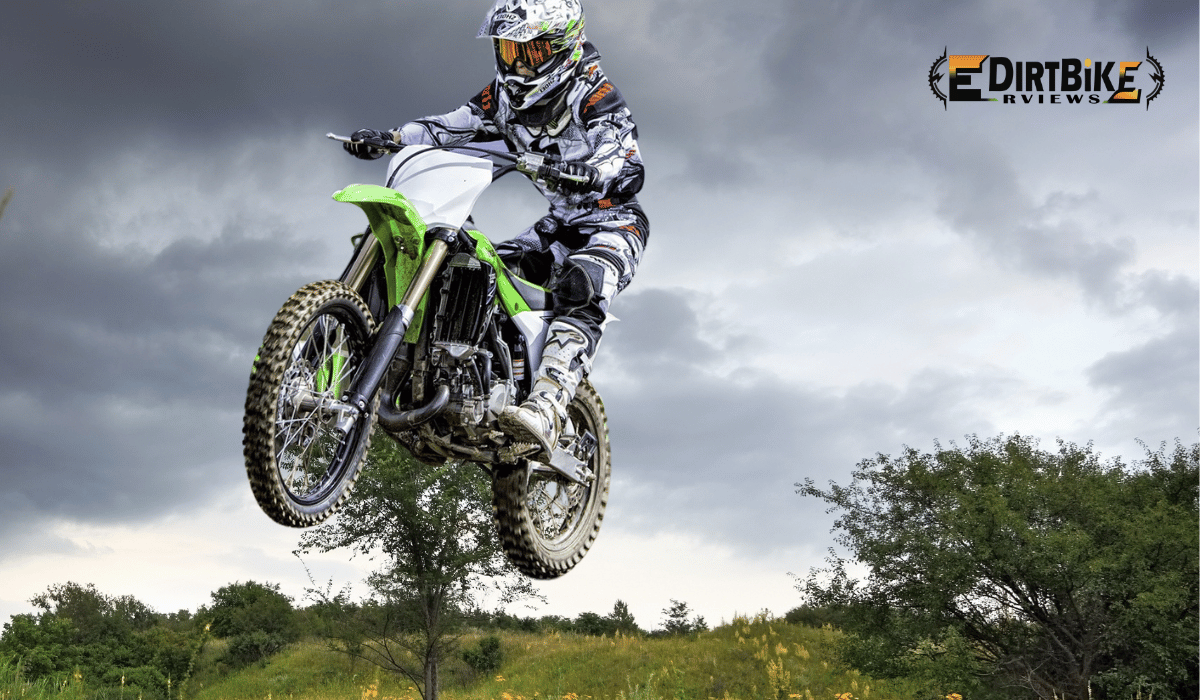
Understanding the impact of weather on electric dirt biking is crucial for both the safety and enjoyment of the rider, as well as for the longevity and performance of the bike. Weather conditions can dramatically affect the riding experience, from altering the bike’s handling and efficiency to challenging the rider’s skills and preparedness. For instance, wet conditions can affect traction and braking, while extreme temperatures can influence battery performance and bike reliability.
Moreover, as electric dirt bikes rely on electrical components and battery systems, they are susceptible to weather-related challenges unique to traditional bikes. Elements like rain, mud, snow, and extreme temperatures can significantly impact the electrical systems, battery life, and overall bike durability. Therefore, riders need to know how different weather conditions can affect their bike’s performance and how to prepare and respond to these challenges adequately.
Electric dirt biking is an exhilarating sport and a testament to the advancements in sustainable transportation. However, with this innovation comes the need to understand and adapt to how weather can influence the electric dirt biking experience. This knowledge ensures the rider’s safety and enjoyment and the optimal performance and longevity of their electric dirt bike.
Table of Contents
The Influence of Weather on Electric Dirt Bike Performance
Temperature Effects
Temperature fluctuations notably influence the performance of electric dirt bikes. Batteries, the powerhouse of these bikes, are sensitive to extreme temperatures. Battery capacity can decrease in cold conditions, reducing range and power output. The cold can cause the batteries to discharge more quickly and reduce efficiency. Conversely, in sweltering conditions, batteries can overheat, which may lead to thermal throttling, where the system reduces power output to prevent damage. This thermal effect can also accelerate battery degradation over time, affecting the long-term performance and reliability of the bike.
Rain and Water Exposure
Electric dirt bikes, like all electrical systems, have a degree of vulnerability to water. While many modern electric bikes are designed with waterproofing features to withstand typical wet conditions encountered off-road, prolonged exposure to water or riding in heavy rain can still pose risks. Water can penetrate seals and enclosures, potentially damaging the electrical components and battery. Furthermore, wet conditions can affect traction and braking, increasing the risk of accidents. Riders must understand their bike’s water resistance capabilities and take appropriate measures to protect it from excessive water exposure.
Wind Conditions
Wind can also impact the riding experience on an electric dirt bike, though the effects are more indirect than temperature and rain. Strong winds can make riding more challenging, especially in open or exposed areas, by affecting stability and rider control. Crosswinds can push the rider off course, requiring more effort to maintain balance and direction. Additionally, headwinds can cause increased energy consumption as the rider and bike work harder against the wind resistance, potentially reducing the bike’s range.
Terrain and Weather Interplay
The interplay between terrain and weather significantly affects electric dirt bike performance. Varied terrains like mud, sand, and snow can behave differently under various weather conditions, affecting traction and control. For example, mud can become more slippery and challenging to navigate after rain, requiring more power and battery usage to maintain speed and control. Snow and ice can reduce traction, necessitating careful handling to prevent accidents. The bike’s performance on these terrains, influenced by weather conditions, highlights the importance of understanding and adapting to the combined effects of weather and terrain for safe and efficient riding.
In conclusion, the performance of electric dirt bikes is considerably affected by weather conditions, including temperature variations, rain and water exposure, wind, and the complex interaction between terrain and weather. Riders must be aware of these factors and prepare accordingly to ensure their safety and the optimal functioning of their bikes in diverse weather conditions.
Electric Dirt Bike Design for Weather Adaptability
Waterproofing and Water Resistance
Manufacturers of electric dirt bikes prioritize waterproofing and water resistance in their designs to enhance the bikes’ adaptability to various weather conditions. Critical components such as the battery, motor, and control systems are encased in waterproof or water-resistant housings to prevent moisture ingress. Seals and gaskets are employed at junctures and openings to block water. At the same time, protective coatings on electrical circuits and connectors provide an additional defense against corrosion and short-circuiting. These design features ensure electric dirt bikes can withstand rain and wet terrain exposure, allowing riders to navigate through challenging conditions without compromising the bike’s performance or safety.
Temperature Management Systems
Electric dirt bikes are equipped with temperature management systems to address the challenges posed by temperature extremes. These systems are designed to maintain optimal battery and motor performance in hot and cold conditions. In cold weather, battery management systems (BMS) can include thermal insulation and heating mechanisms to prevent the battery’s temperature from dropping too low, thus preserving its efficiency and range. In contrast, for hot weather conditions, these systems often feature cooling technologies like air or liquid cooling to dissipate excess heat and prevent overheating. By regulating the temperature, these management systems protect the bike’s components, ensuring consistent performance and prolonging the lifespan of the battery and motor.
Durability in Various Weather Conditions
The overall durability of electric dirt bikes in diverse weather conditions is a critical consideration in their design. Materials used in the construction of the bike, such as frames, casings, and external components, are chosen for their strength, corrosion resistance, and ability to withstand environmental stress. This includes using alloys and plastics that resist rust and decay when exposed to moisture, mud, or salt. The design also considers the impact of UV radiation, ensuring that materials do not degrade quickly when exposed to sunlight for prolonged periods. These design choices ensure that electric dirt bikes remain robust and reliable, whether ridden in scorching heat, cold, or during torrential rains.
In conclusion, the design of electric dirt bikes for weather adaptability focuses on waterproofing, temperature management, and overall durability. These features collectively ensure that the bikes can withstand and perform optimally in various weather conditions, providing riders with confidence in the reliability and safety of their electric dirt bikes regardless of the environmental challenges they face.
Riding Strategies in Different Weather Conditions
Tips for Wet Conditions
Riding an electric dirt bike in wet conditions requires careful preparation and technique. Firstly, riders should ensure their bike’s waterproofing is up to standard to prevent water-related damage. When navigating wet terrain, reducing speed and using gentle, smooth inputs for throttle, brakes, and steering can help maintain control and prevent skidding or sliding. Avoiding deep puddles or streams where water could submerge critical components is also essential. Tires with appropriate tread patterns can enhance grip in slippery conditions, and riders should wear waterproof gear to stay dry and focused.
Handling Cold Weather Riding
Cold weather can significantly impact battery performance and rider comfort. Riders should store their electric dirt bike in a temperature-controlled environment to maximize battery life and efficiency when not in use. Pre-warming the battery before riding can also help. On the trail, conserving battery power by maintaining a steady pace and avoiding unnecessary acceleration is wise. Dressing in layers with thermal and windproof clothing will keep the rider warm and reduce the cold’s impact on performance and endurance.
Strategies for Windy Conditions
In windy conditions, the key is to reduce the bike’s profile against the wind and maintain stability. Leaning slightly into the wind can help counteract its force. Riders should be prepared for sudden gusts, keeping a relaxed grip on the handlebars to allow quick adjustments. Reducing speed and avoiding risky maneuvers is also advisable, as wind can unpredictably affect the bike’s path. Choosing routes sheltered from the wind, when possible, can make for a more enjoyable and less exhausting ride.
Adapting to Changing Terrains
Electric dirt bikes must handle a variety of terrains, which can change rapidly with the weather. Riders should be observant and ready to adjust their riding style accordingly. For instance, it may be necessary to shift weight rearward to improve traction in muddy or sandy conditions. On rocky or uneven terrain, standing on the pegs can help absorb shocks and give better control. It’s crucial to continuously assess the terrain and adjust speed, riding position, and bike settings (like suspension and power delivery) to safely and effectively navigate different landscapes.
In conclusion, riding an electric dirt bike in varying weather conditions demands adaptability and skill. By employing strategies tailored to wet, cold, and windy environments and being prepared to adjust to changing terrains, riders can enhance their experience and ensure both their safety and the longevity of their bike.
Maintenance and Care for Electric Dirt Bikes in Varied Climates
Routine Checks and Maintenance
Regular maintenance is essential for electric dirt bikes’ optimal performance and longevity, especially when ridden in varied climates. Routine checks should include inspecting the battery’s charge level and health, ensuring all electrical connections are secure and corrosion-free, and verifying that the motor and controller are functioning correctly. Mechanical components like brakes, suspension, and tires also need regular inspection for wear and proper operation. It’s essential to follow the manufacturer’s recommended service intervals and to promptly address any issues to prevent minor problems from escalating into significant failures.
Post-Ride Care in Adverse Weather
After riding in rain, snow, or dusty conditions, cleaning the bike properly is crucial to remove any debris, moisture, or corrosive substances that could damage its components. Start by gently rinsing the bike to wash away mud and grime, avoiding direct water spray on sensitive electrical parts. To prevent moisture-related issues, dry the bike thoroughly, especially around electrical connections and battery compartments. Lubricating moving parts, such as the chain and suspension pivots, can help protect them from rust and wear. Inspecting the bike for any damage caused by exposure to harsh conditions should be part of the post-ride care routine.
Long-term Storage and Weather Considerations
When storing an electric dirt bike for extended periods, particularly in regions with extreme weather, it’s essential to consider the environment’s impact on the bike’s components. The battery should be stored at a moderate temperature and charged to the level recommended by the manufacturer to maintain its health. The storage area should be dry and free from extreme temperature fluctuations to prevent damage to the bike’s electrical and mechanical systems. Covering the motorcycle with a breathable, waterproof cover can protect it from dust and moisture. Additionally, periodic checks during storage can help ensure that the bike remains in good condition and is ready to perform reliably when next used.
In summary, maintaining and caring for an electric dirt bike in varied climates involves routine checks, diligent post-ride care, and proper storage practices. These efforts help to ensure the bike’s reliability, performance, and longevity, enabling riders to enjoy their electric dirt biking experience in any weather condition.
Personal Insights on Electric Dirt Biking
Unique Experiences and Observations
Having spent considerable time navigating diverse terrains and weather conditions on electric dirt bikes, I’ve observed their remarkable evolution and adaptation to the off-road environment. One standout experience was riding through a dense forest trail after a heavy rainstorm. The silent operation of the electric motor allowed me to immerse fully in the natural surroundings, a stark contrast to the noise of a gas-powered bike. The bike’s instant torque and smooth power delivery were exceptional, providing precise control through slippery sections and over wet leaves, showcasing the synergy between technology and nature.
Expert Opinion on Electric Dirt Bike Performance in Various Weathers
From a performance perspective, electric dirt bikes exhibit unique strengths and vulnerabilities across different weather conditions. I noticed a decreased battery range in cold weather, highlighting the importance of thermal management systems that can maintain battery efficiency. However, the low-end torque of electric motors is a boon in snowy or muddy conditions, offering controlled power output that helps maintain traction.
In wet conditions, the reduced noise and absence of exhaust emissions of electric bikes enhance the riding experience, though the importance of waterproofing becomes evident to protect the electrical components. During hot weather rides, the absence of a heat-emitting engine makes electric dirt bikes more comfortable, though attention must be paid to preventing battery overheating.
Electric dirt bikes also excel in windy conditions, where their lower center of gravity and stable handling inspire rider confidence. The ability to adjust power settings on the fly allows for a tailored riding experience, responding dynamically to the challenges of gusty winds.
In conclusion, my experiences with electric dirt biking have affirmed their potential to transform off-road riding. Their performance in various weather conditions, combined with the environmental benefits, positions them as a compelling choice for the future of the sport. While there are challenges related to weather impacts on battery life and electrical systems, ongoing technological advancements continue to enhance their resilience and capability, making electric dirt bikes increasingly viable and enjoyable under diverse environmental conditions.
Frequently Asked Questions (FAQs)
Does rain affect electric bikes?
Rain can affect electric dirt bikes, especially if they are not waterproofed. Modern electric bikes are generally designed to handle light to moderate rain without damage to the electrical components, thanks to protective casings and seals. However, prolonged exposure to heavy rain or submersion in water can lead to potential risks like short-circuiting or corrosion. It’s essential to check the manufacturer’s guidelines on the bike’s water resistance and take precautions during wet conditions.
How cold is too cold for Ebikes?
Electric dirt bikes can operate in cold weather, but their performance may diminish below freezing (0°C or 32°F). Extreme cold can reduce battery efficiency and capacity, leading to shorter ride times and decreased power. To mitigate cold weather effects, it is advisable to store the bike in a warmer environment when not in use and use thermal insulation for the battery, if available. Generally, temperatures below -10°C (14°F) are challenging for electric bikes and could warrant special considerations for battery care and bike operation.
Do electric bikes work in the snow?
Yes, electric dirt bikes can work in the snow, provided they have the appropriate tires and the rider has the necessary skills. The key is to maintain traction and control in slippery conditions. Fat tires with deep treads benefit snow riding, providing better grip. However, extreme cold and wet conditions can affect battery performance and risk damage to the electrical system, so it’s crucial to ensure the bike is suitably equipped and maintained for snowy conditions.
Can heat affect electric dirt bike performance?
Yes, high temperatures can cause the battery to overheat, reducing efficiency and potential damage. Cooling systems and proper thermal management are essential to maintaining performance in hot weather.
Are electric dirt bikes suitable for all seasons?
Electric dirt bikes can be ideal for all seasons, but their performance and maintenance needs vary with the weather. Riders must adapt to seasonal conditions, ensuring their motorcycle is appropriately prepared and maintained for optimal performance year-round.
How can I protect my electric dirt bike from weather-related wear and tear?
Regular maintenance, proper storage, and using weather-appropriate protective gear for your bike, such as covers and guards, can help protect it from weather-related wear and tear. Following the manufacturer’s guidelines for care and maintenance is also crucial.
These FAQs underscore the importance of understanding the interplay between weather conditions and electric dirt bike performance. They emphasize proper preparation and maintenance to ensure a safe and enjoyable riding experience.
Conclusion
Throughout this comprehensive exploration, we have delved into the significant impact of weather conditions on electric dirt biking, scrutinizing how elements like temperature, rain, wind, and terrain interact with these innovative machines. We’ve learned that electric dirt bikes are designed with weather adaptability in mind, featuring waterproofing, temperature management systems, and robust durability. However, they still require mindful riding strategies and maintenance to navigate varied climates successfully.
Electric dirt bikes offer a sustainable and exhilarating off-road experience, with technological advancements enhancing their performance and reliability in different weather scenarios. From wet and muddy trails to cold, windy, or hot conditions, these bikes have proven capable of handling diverse environmental challenges, albeit with considerations for battery life and component protection.
Electric dirt bikes are a testament to the progress in off-road motorcycling, marrying eco-friendliness with performance. Their resilience against weather challenges, coupled with the proper care and handling, ensures they are a novelty and a viable and sustainable option for enthusiasts and professionals alike. As technology continues to evolve, the future of electric dirt biking looks promising, offering riders the thrill of the ride while minimizing environmental impact.
E-Bike Tips & Guides
Choosing the Right Tires for Your Electric Dirt Bike
With our expert guide, master the art of selecting the perfect tires for your electric dirt bike. Discover how the right tires enhance every ride’s performance, safety, and enjoyment.
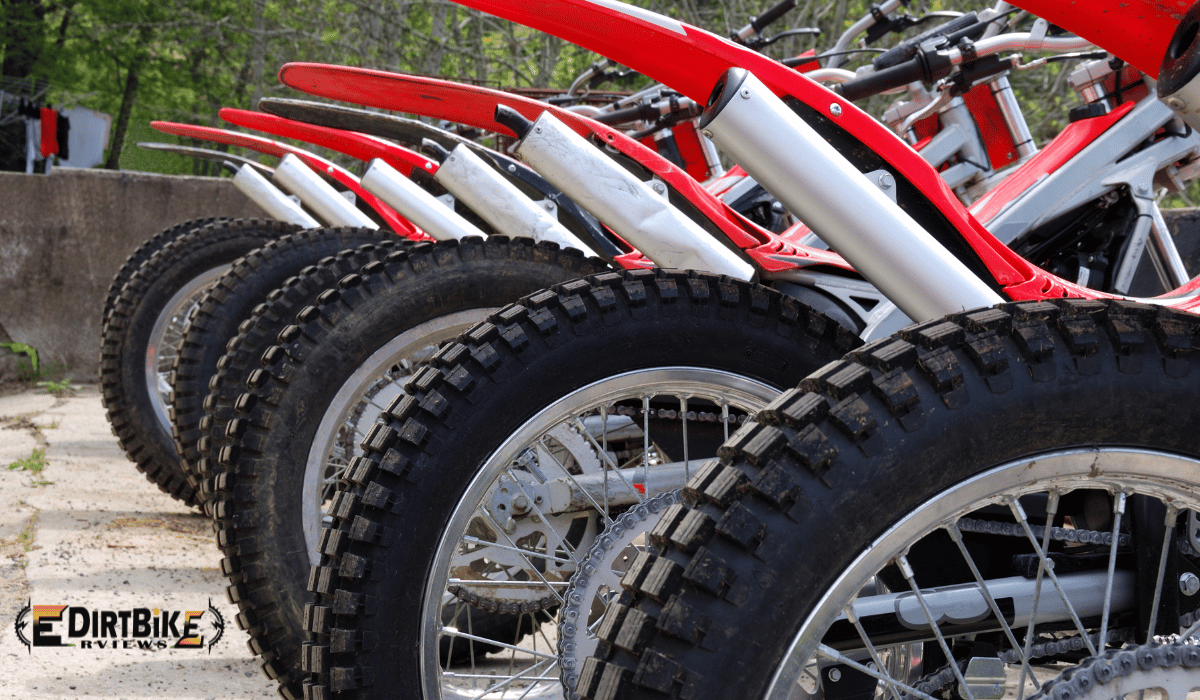
Choosing the right tires for your electric dirt bike is a decision that significantly influences both performance and safety. Tires are the sole contact point between the bike and the ground, playing a pivotal role in how the bike handles various terrains, responds to rider inputs, and performs under different riding conditions. This selection process becomes even more critical with electric dirt bikes, where the unique characteristics of electric power delivery can affect tire wear and performance.
Table of Contents
Selecting the Right Tires for Electric Dirt Bikes
The right tires can transform the riding experience, offering improved traction, stability, and confidence on the trail. Electric dirt bikes, known for their instant torque and consistent power output, require tires that can handle the immediate force and provide adequate grip to efficiently transfer this power into forward motion. The selection is not just about the tire’s ability to endure the power but also its compatibility with the bike’s design and the rider’s style, ensuring that the bike’s capabilities are fully utilized.
Impact of Tires on Performance and Safety
The impact of tires on an electric dirt bike’s performance is profound. Well-chosen tires enhance handling, allowing for sharper turns, better control of technical sections, and more effective braking. They can also reduce the risk of slippage and accidents, particularly in challenging weather or rugged terrain, safeguarding the rider. On the safety front, the right tires lessen the wear on the bike’s components, promote longer battery life by requiring less power to overcome rolling resistance, and generally contribute to a more stable and predictable ride.
Selecting the right tires for an electric dirt bike is crucial to ensuring optimal performance and safety. The choice should be informed by understanding how different tires interact with electric bike dynamics, the intended riding environment, and the rider’s preferences and skills. With the appropriate tires, riders can maximize their enjoyment and control, making every ride safer and more satisfying.
Understanding Tire Basics
Types of Dirt Bike Tires and Their Characteristics
Dirt bike tires come in various types, each designed to perform best under specific conditions:
- Knobby Tires: Characterized by large, spaced-out knobs, these tires offer excellent traction on soft, muddy, or loose surfaces. The knobs dig into the terrain, providing a grip that is essential for off-road riding.
- Intermediate Tires: These are the all-rounders of dirt bike tires, featuring medium-sized knobs with closer spacing. They perform well on various terrains, from soft dirt to hard-packed trails.
- Hard Terrain Tires: Designed for riding on hard, rocky, or compacted surfaces, these tires have smaller, tightly spaced knobs. They offer a larger contact area with the ground, enhancing grip on hard surfaces.
Tire Size and Its Implications for Riding
The size of the tire, typically denoted by width and diameter measurements, affects the bike’s handling and performance. Larger tires may provide better traction and stability due to a larger contact patch with the ground but can also increase rolling resistance, affecting acceleration and battery efficiency. Conversely, smaller tires might offer quicker handling and less rolling resistance but could reduce stability and traction.
Tread Patterns and Terrain Compatibility
The tread pattern on a dirt bike tire plays a crucial role in determining its suitability for different terrains:
- Mud Treads: Designed with wide-spaced, large knobs to prevent mud from clogging, these treads are ideal for wet and muddy conditions, allowing the tire to penetrate the surface and find traction.
- Sand Treads: These tires have a paddle-like design, optimal for loose, sandy terrains where the wide-spaced knobs help in creating a scooping action for better propulsion.
- Rocky Treads: Featuring smaller, closer-spaced knobs and often made of more complex rubber compounds, these tires are designed to grip onto rocky surfaces and resist puncture or damage from sharp edges.
In summary, understanding the basics of dirt bike tires, including the types, sizes, and tread patterns, is essential for selecting the right tire for your electric dirt bike. The choice should align with the typical riding conditions and personal riding style to ensure optimal trail performance, safety, and enjoyment.
Special Considerations for Electric Dirt Bikes
How Electric Dirt Bike Performance Influences Tire Choice
Electric dirt bikes exhibit characteristics that distinctly influence tire selection. Electric motors’ instant torque and continuous power delivery can lead to faster tire wear, especially if the tires are not designed to handle such forces. The acceleration characteristics of electric bikes mean that tires need to have excellent traction to prevent slipping and to utilize the motor’s power effectively. Additionally, since electric dirt bikes often have a heavier build due to the battery, choosing tires that can support the additional weight without compromising performance is crucial.
Durability and Wear Considerations for Electric Bikes
The durability of tires on electric dirt bikes is a significant consideration due to the unique demands of electric propulsion. Tires must be robust enough to withstand the constant torque and be made of compounds that resist wear from the electric motor’s immediate power output. The regenerative braking standard in electric dirt bikes also affects tire wear patterns, potentially causing the rear tire to wear down differently than on a gas-powered motorcycle. Therefore, when selecting tires for an electric dirt bike, it’s essential to consider those explicitly designed for electric or high-performance vehicles, as they are more likely to offer the durability and wear characteristics suited to the bike’s performance profile.
In summary, the performance attributes of electric dirt bikes require careful consideration when choosing tires. The right tires for an electric dirt bike should accommodate the machine’s power and weight and offer durability and wear characteristics that align with the unique aspects of electric biking. This careful selection ensures sustained performance and enhances the overall riding experience.
Selecting Tires for Different Riding Conditions
Tires for Muddy and Wet Conditions
When riding an electric dirt bike in muddy and wet conditions, tires with deep, wide-spaced knobs are ideal. These tread patterns help clear mud quickly and prevent the tire from clogging, maintaining traction in slippery conditions. The knobs’ depth ensures that the tire can penetrate the surface layer of mud to reach firmer ground beneath, providing better grip. Tires designed for wet conditions often have softer rubber compounds to enhance grip on slick surfaces.
Tires for Sandy or Loose Terrain
In sandy or loose terrain, where flotation and stability are critical, tires with a broader profile and flexible knobs are preferable. These features allow the tire to float over the sand rather than digging in, preventing the bike from bogging down. The flexible knobs adapt to the shifting sands, providing a larger contact area and improving traction. The tire’s construction should be durable enough to withstand the abrasive nature of sand, which can quickly wear down the tread.
Tires for Rocky or Hard-Packed Trails
Riding on rocky or hard-packed trails requires tires with solid sidewalls and dense, less pronounced tread patterns. These characteristics prevent punctures from sharp rocks and provide a stable ride on hard surfaces. The tread should offer enough grip to handle the terrain’s irregularities while being smooth enough to maintain contact with the ground. Hard compound tires are typically used in these conditions as they are more resistant to wear and tear and provide better stability at higher speeds.
In conclusion, selecting the right tires for specific riding conditions is crucial for enhancing the performance and safety of an electric dirt bike. To ensure optimal traction, stability, and durability, the tire choice should be based on the terrain’s nature, whether muddy, sandy, or rocky. By matching the tires to the expected riding conditions, riders can maximize their electric dirt bike’s capabilities and enjoy a safer, more satisfying experience on the trails.
Maintenance and Care for Dirt Bike Tires
Regular Inspection and Maintenance Routines
Proper tire maintenance is essential for ensuring the safety and performance of your electric dirt bike. Regular inspections should be part of your maintenance routine. Check for signs of wear, such as tread depth reduction, and look for damage like cuts, punctures, or embedded objects. Tire pressure should be checked before each ride, as incorrect pressure can affect the bike’s handling, increase tire wear, and potentially lead to tire failure.
Rotating the tires periodically can promote even wear, especially if one tire tends to wear down faster than the other due to the bike’s weight distribution or riding style. Cleaning the tires and removing debris from the treads after rides can also extend their life and prevent premature wear.
When to Replace Your Dirt Bike Tires
Knowing when to replace your dirt bike tires is crucial for maintaining optimal performance and safety. Key indicators for replacement include:
- Tread Wear: If the tread depth exceeds the manufacturer’s recommended limit, it’s time for a new tire. Worn treads compromise the tire’s grip and can significantly affect the bike’s handling, especially in adverse conditions.
- Age and Condition: Over time, tires degrade due to exposure to elements, even if they’re not used frequently. Cracks, hardening, or noticeable performance decline are signs that the tires need replacing.
- Damage: Any signs of severe damage, like deep cuts, punctures, or sidewall bulges, indicate that a tire needs to be replaced immediately to avoid the risk of blowouts or accidents.
Regular maintenance and timely tire replacement are vital for ensuring the performance and safety of your electric dirt bike. By keeping a close eye on the condition of your tires and addressing any issues promptly, you can enjoy a reliable and safe riding experience.
Personal Insights on Tire Selection for Electric Dirt Bikes
Experiences with Different Tires in Various Conditions
Through years of riding and testing various electric dirt bikes, I’ve learned that tire selection can dramatically alter the bike’s performance and the rider’s experience. For instance, while navigating muddy trails, tires with aggressive tread patterns provided the necessary grip to power through without getting stuck. In contrast, when riding on sandy dunes, wider tires with a paddle-like design offered the flotation needed to glide over the surface rather than digging in.
One particular experience that stands out was riding with a set of high-performance tires on rocky terrain. The tires’ reinforced sidewalls and specific tread design provided exceptional stability and traction, making a noticeable difference in handling sharp rocks and hard-packed paths. This experience underscored the importance of choosing tires specifically designed for the terrain and conditions of the ride.
Recommendations Based on Riding Style and Bike Specifications
Selecting the right tires for your electric dirt bike involves considering your riding style and the bike’s specifications. Tires with durable construction and aggressive tread patterns are essential for aggressive riders who push their bikes to the limits on challenging terrains. These riders should look for tires that can withstand high torque and provide excellent traction in various conditions.
Conversely, a less aggressive tread pattern might be more appropriate for casual riders or those using their bikes primarily on smooth trails, offering a balance between grip and riding comfort. Additionally, the weight and power output of the electric dirt bike should influence tire choice. Heavier and more powerful bikes require tires that can handle the extra load and power, emphasizing the need for durability and robustness.
In conclusion, my experiences have taught me that there is no one-size-fits-all answer to tire selection for electric dirt bikes. Instead, the best choice depends on careful consideration of the riding conditions, personal riding style, and the bike’s specific capabilities and characteristics. With the right tires, riders can enhance the performance and enjoyment of their electric dirt biking adventures.
Frequently Asked Questions (FAQs)
What size tires are best for an electric dirt bike?
The best tire size for an electric dirt bike depends on the bike’s design, intended use, and rider preference. Generally, larger tires provide better stability and are more capable of handling various terrains, making them suitable for off-road conditions. However, smaller tires might offer more agility and faster acceleration. When selecting tire size, it’s essential to refer to the bike manufacturer’s recommendations and consider the type of terrain you plan to ride on.
Do e-bikes require special tires?
While electric dirt bikes don’t necessarily require special tires, it’s advisable to choose tires that can withstand the unique demands of electric propulsion, such as instant torque and increased weight. Tires designed for electric bikes often have reinforced structures to handle the additional stress and provide better durability and performance.
Do I need ebike-specific tires?
Using ebike-specific tires can be beneficial due to their optimized design for electric bikes’ weight and power output. These tires usually feature more durable materials and construction to cope with electric dirt bikes’ higher torque and speeds. While not mandatory, ebike-specific tires can enhance the performance and safety of your ride.
How often should I replace the tires on my electric dirt bike?
Tire replacement frequency on an electric dirt bike depends on usage, terrain, and tire quality. Regularly inspect your tires for wear and damage, and replace them when the tread depth is below the recommended level or if there are signs of significant wear, damage, or aging. Active riders might need to replace their tires once a season or more, depending on the riding conditions.
These FAQs cover the essential aspects of tire selection and maintenance for electric dirt bikes, guiding riders in making informed decisions to optimize their bike’s performance and safety.
Conclusion
Choosing the right tires for an electric dirt bike is a critical decision that significantly impacts the bike’s performance, safety, and overall riding experience. This comprehensive discussion has highlighted the factors riders must consider, including tire size, tread pattern, terrain compatibility, and whether to opt for e-bike-specific tires.
Recap of Key Points on Choosing the Right Tires
- Tire Size and Type: Selecting the appropriate size and type of tire for your electric dirt bike is essential for optimal performance and handling. Your choices will vary based on terrain and your personal riding style.
- Tread Patterns: The tread pattern should match the riding conditions you most frequently encounter, whether mud, sand, rocky trails or hard-packed dirt paths.
- Durability and Performance: Considering the unique demands of electric dirt bikes, such as higher torque and potentially heavier weights, it’s advisable to choose tires with enhanced durability and performance.
The Significance of Tire Selection in Enhancing the Electric Dirt Biking Experience
The right tires can transform an electric dirt bike ride from good to exceptional. They ensure better traction, improved stability, and a safer riding experience, allowing riders to fully exploit their electric bikes’ capabilities. The silence and power of electric dirt biking, combined with the perfect tire choice, can elevate the adventure, allowing riders to confidently tackle diverse terrains and enjoy the journey to its fullest.
In summary, tire selection is a fundamental aspect of electric dirt bike preparation that should not be overlooked. With the right tires, riders can enhance their electric dirt biking experience, ensuring each ride is as thrilling, safe, and satisfying as possible. By understanding and applying this article’s insights, riders can make informed decisions that optimize their bike’s performance and suit their riding preferences.
-
Electric Dirt Bike For Kids2 years ago
Electric Dirt Bikes Under $1000: Your Ultimate Guide to Affordable Off-Road Adventure
-
Electric Dirt Bike For Adults2 years ago
Top 11 Electric Dirt Bikes for Adults in 2024: Unleashing the Future of Off-Road Adventure
-
Electric Dirt Bike For Adults2 years ago
Unleashing Power and Innovation: The Stark Varg Electric Dirt Bike Reviewed
-
Electric Dirt Bike For Adults2 years ago
Unleashing the Thrill: MotoTec Venom 72V 12000W Electric Dirt Bike Review
-
Electric Dirt Bike For Adults2 years ago
Unveiling the Segway Dirt eBike X260: Power, Performance, and Adventure
-
Electric Dirt Bike For Adults2 years ago
Conquering Trails with the Sur-Ron Light Bee X: A Comprehensive Review
-
Electric Dirt Bike For Kids2 years ago
Razor MX125 Electric Dirt Bike Review: The Ideal Starter Bike for Kids
-
Electric Dirt Bike For Adults2 years ago
Unleashing the Power of the Rawrr Mantis: The Ultimate Electric Dirt Bike Experience



